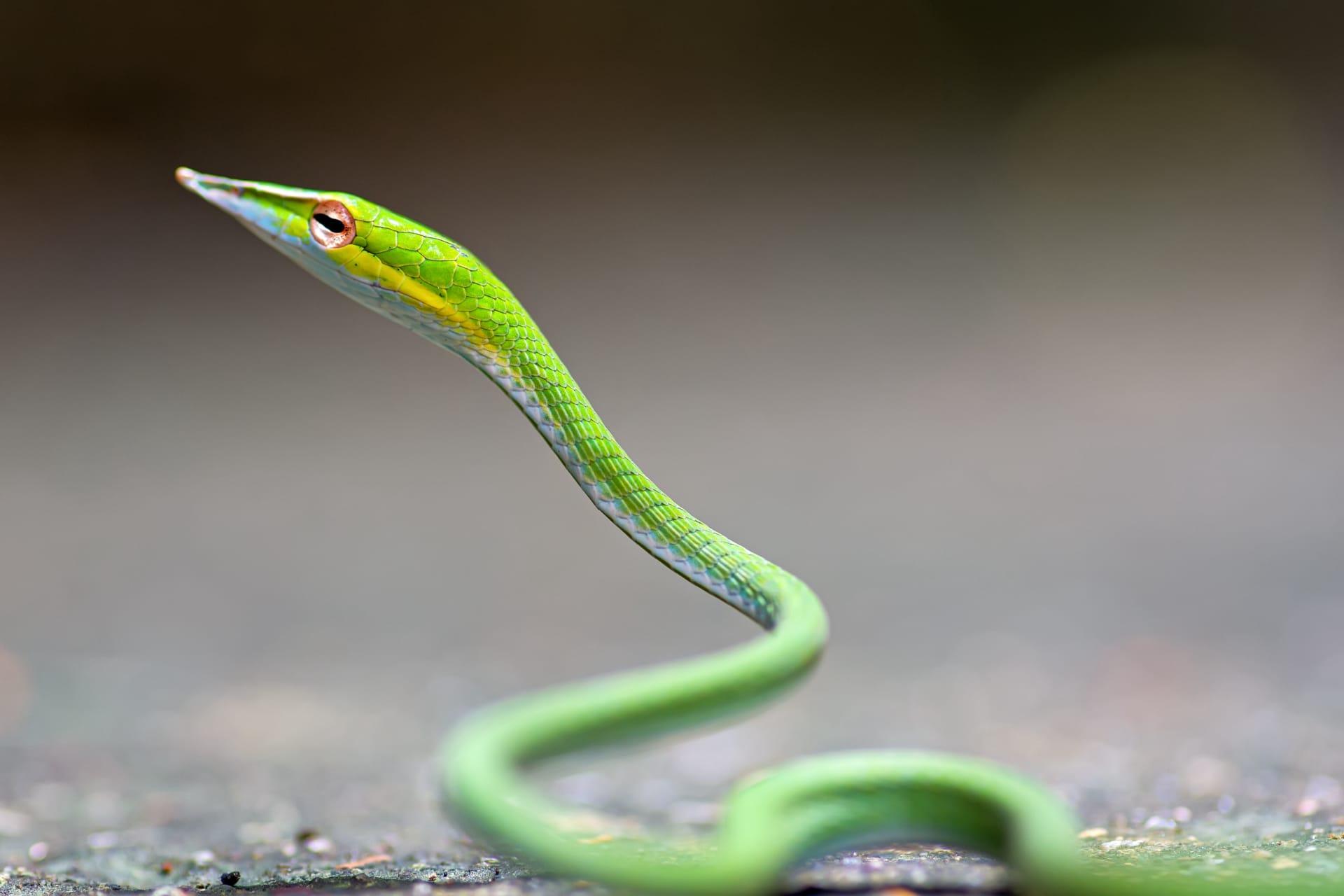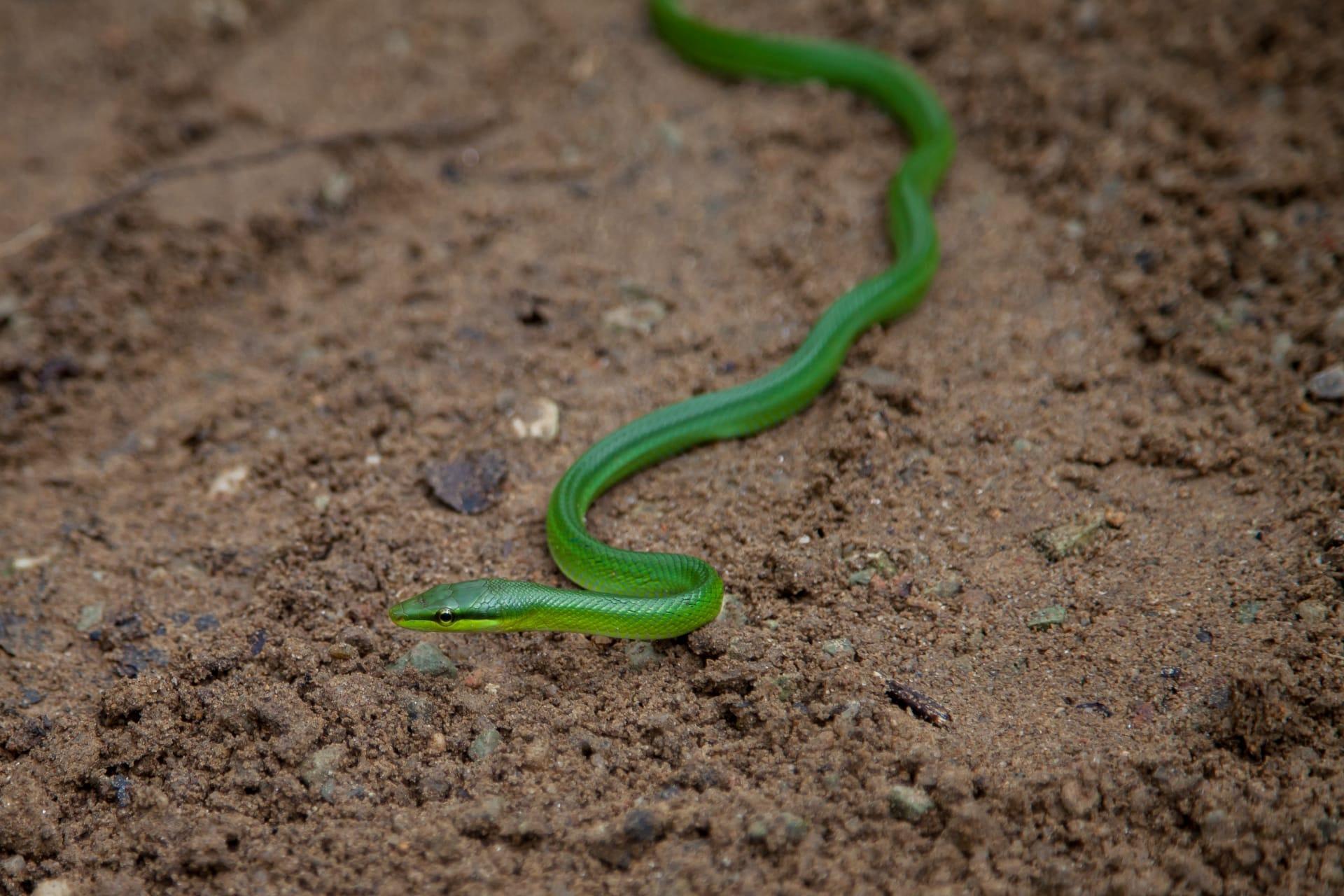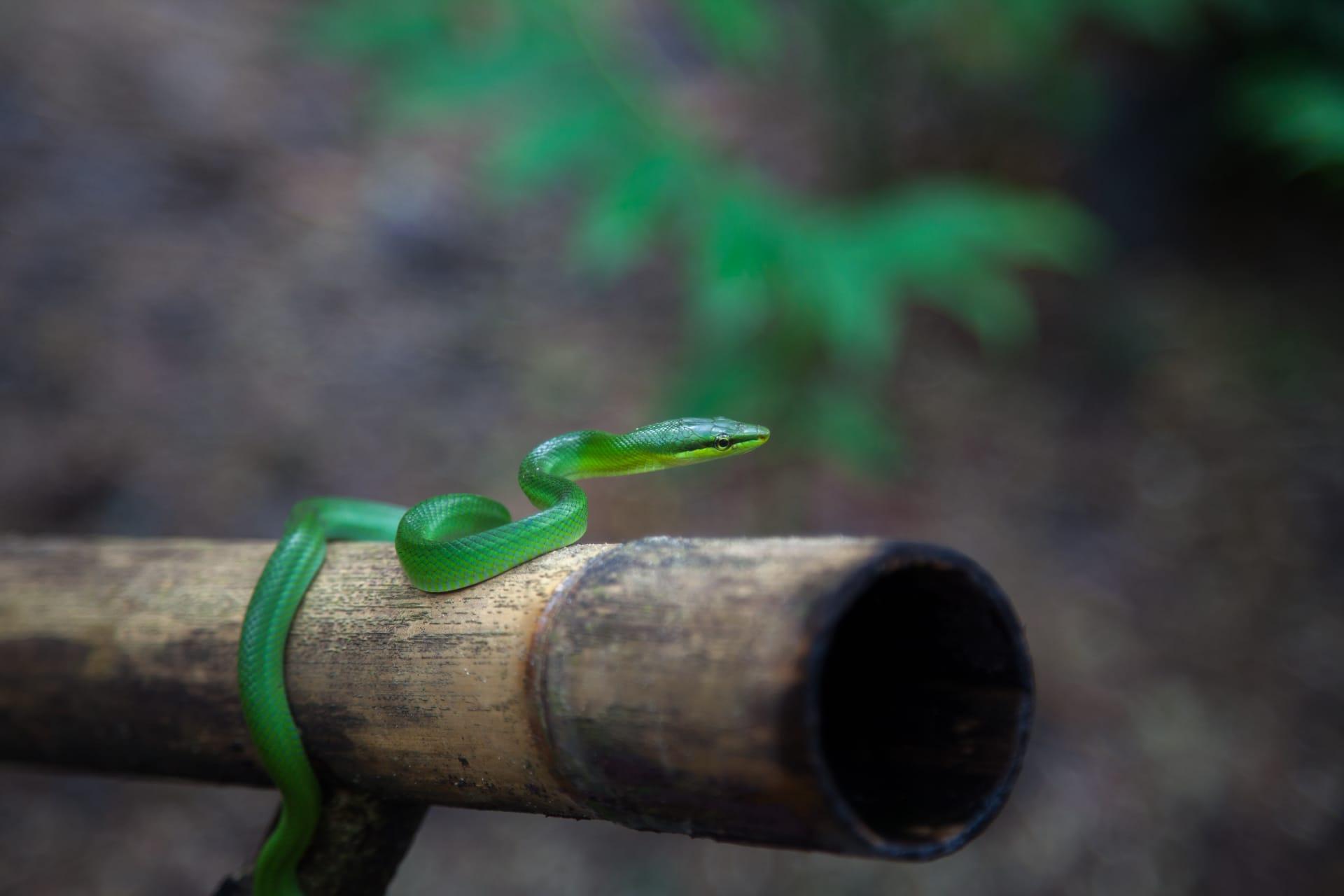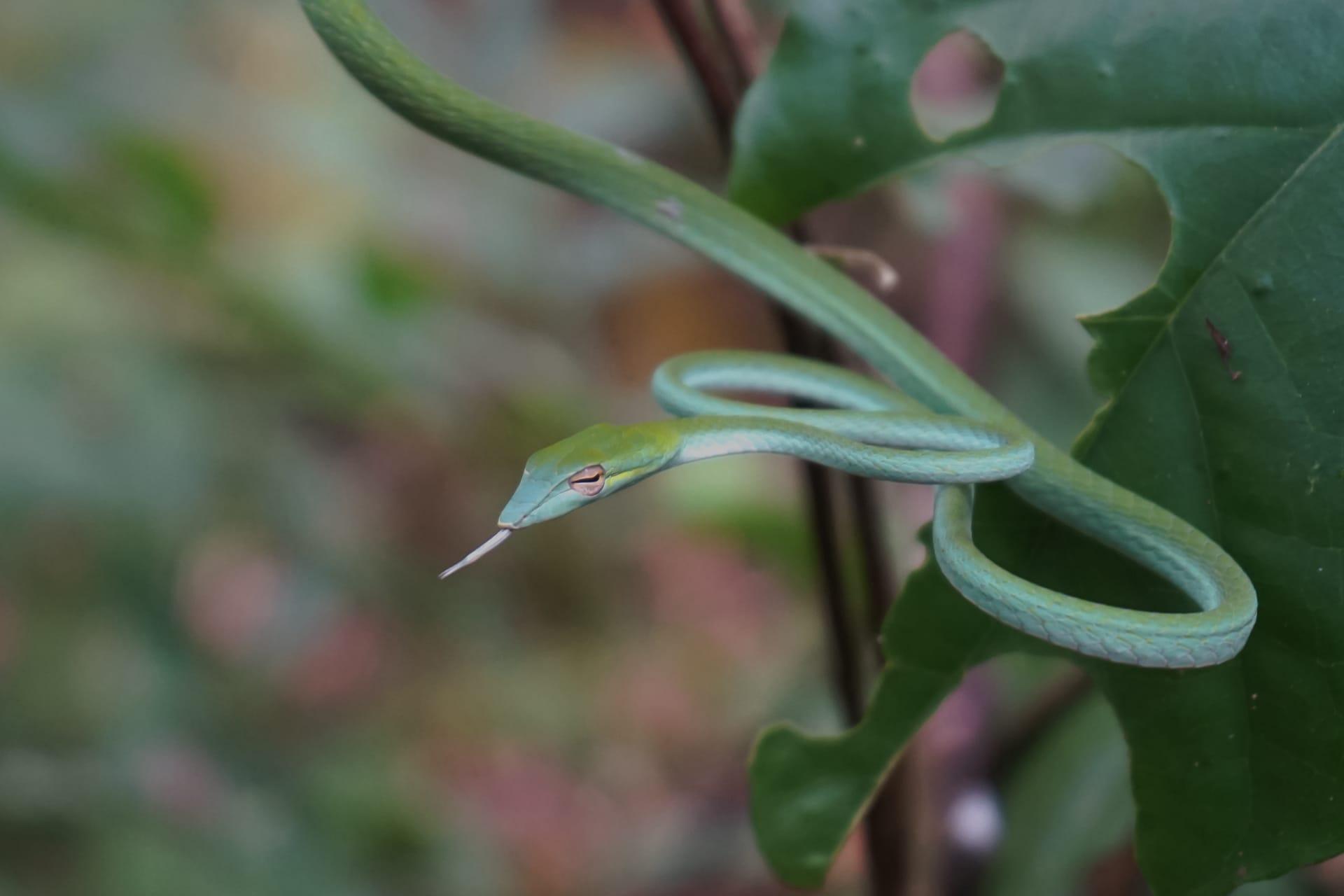Oriental Whip Snake Characteristics
- Home /
- Mini Encyclopedia /
- Animal /
- Oriental Whip Snake Characteristics
1
The Oriental Whip Snake, a fascinating creature, boasts a slender body stretching up to 2 meters in length. Its vibrant green hue camouflages perfectly in foliage, with some displaying a yellowish or bluish tint. This arboreal snake, adept at climbing, spends most of its life in trees. It possesses large, prominent eyes, essential for its diurnal activities. The lifespan of this species can extend up to 15 years in the wild, showcasing its resilience and adaptability.
One of the most remarkable organs of the Oriental Whip Snake is its tongue. Unlike many creatures, the snake's tongue is forked, serving a critical function in its sensory perception. This unique structure enhances its ability to detect chemical cues in the environment. When flicked out, the tongue gathers tiny particles from the air, which are then analyzed by the Jacobson's organ in the mouth. This process, known as chemoreception, is pivotal for locating prey, navigating their habitat, and even finding mates.

2
Question: What do Oriental Whip Snakes primarily feed on?
Answer: Oriental Whip Snakes have a diet primarily consisting of small vertebrates and invertebrates. They exhibit a preference for lizards, especially chameleons and geckos, which are abundant in their natural habitat. These snakes are also known to consume birds, rodents, and occasionally, smaller species of snakes. Their hunting strategy involves waiting patiently in the trees and striking swiftly when prey comes within reach. The snake's slender and agile body aids in navigating through branches to capture unsuspecting prey with precision.

3
Oriental Whip Snakes are characterized by their exceptional agility and speed. Their slender bodies allow them to move swiftly through trees and underbrush, making them adept climbers and quick movers on the ground. They can glide from branch to branch with ease, demonstrating remarkable balance and coordination. This mobility is crucial for both hunting prey and evading predators.
When it comes to hunting, Oriental Whip Snakes use a combination of stealth and speed. They are ambush predators, often lying in wait for hours until an opportunity arises. Upon spotting their prey, they strike with lightning speed, using their sharp, rear-fanged teeth to immobilize the prey. The snake's venom, though mild to humans, is effective in subduing smaller animals. After the initial strike, the snake may coil around its prey, using constriction to ensure capture.

4
The Oriental Whip Snake thrives in a variety of environments, including forests, plantations, gardens, and even urban areas. These habitats offer ample foliage for camouflage and hunting. They prefer warm, humid climates and are commonly found in Southeast Asia. The adaptability of the Oriental Whip Snake to different environments is a testament to its survival skills, allowing it to thrive in both natural and modified landscapes.
In terms of reproduction, Oriental Whip Snakes are oviparous, laying eggs to propagate their species. Females typically lay a clutch of 5 to 15 eggs, which are often deposited in hollow trees, under rocks, or in leaf litter. The eggs are incubated for about two to three months before hatching. Hatchlings are independent from birth, equipped with the skills needed for survival. This reproductive strategy helps ensure the continued presence of the species in various ecosystems.

5
Book: "Serpents in the Trees: An Ecological Study of the Oriental Whip Snake" explores the intricate relationship between this unique snake species and its environment. Authored by Dr. Meena Srinivasan in 1999, this book delves into the ecology, behavior, and conservation of the Oriental Whip Snake across different Asian countries. It provides an in-depth look at how these snakes interact with their ecosystem, including their role as both predator and prey.
Book: "The Green Aerial Hunter: The Oriental Whip Snake", written by Liam O'Connor in 2005, offers a comprehensive overview of the life and habits of the Oriental Whip Snake. O'Connor, a renowned herpetologist, combines years of field research with stunning photography to bring the reader closer to understanding this fascinating species. The book covers aspects such as feeding habits, reproduction, and the snake's adaptability to changing environments, making it a valuable resource for both enthusiasts and professionals.